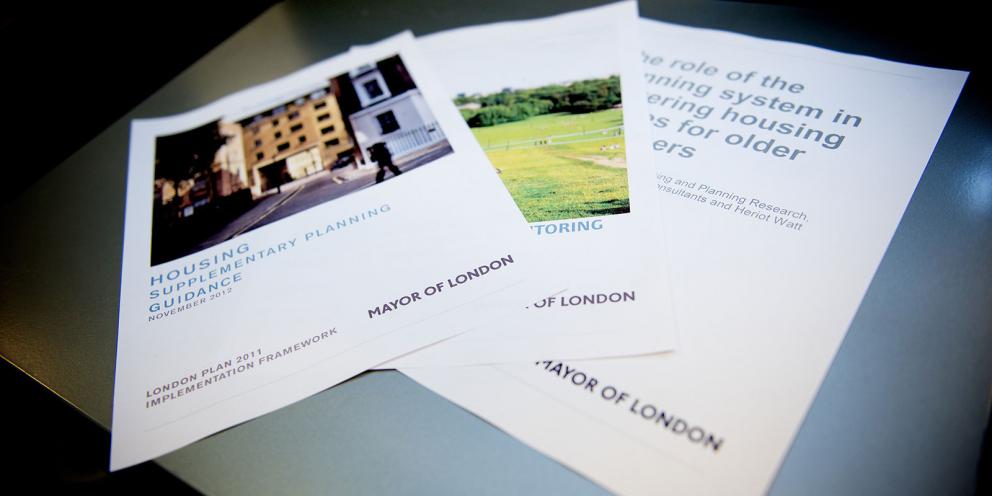On March 3rd, Tower Hamlets launched their Draft Supplementary Planning Document (SPD) on density. The document, entitled High Density Living was commissioned in a time of strong housing pressures for the borough (target of 3,511 per annum in the Draft London Plan) with little land left. This SPD aims to fill a gap in policy guidance and understanding on density both in the borough and in London overall.
This guidance is one of a number of recent studies and guidelines on the topic of residential density. These include Living with Beauty (report of the Building Better, Building Beautiful Commission) and the Mayor’s draft SPG on housing design, Good Quality Homes for All Londoners.
Tower Hamlet’s SPD was released at the same time as our recent report Living in a denser London: How residents see their homes. The two projects had similar aims and methods, and our respective teams were in touch throughout the research process. This blog compares our findings with theirs, and draws implications for dense living going forwards.
Tower Hamlets’ research project
Like us, the Tower Hamlets team was interested in knowing about the experience of residents in high density schemes. The researchers looked at 9 different schemes, including different types of housing form, tenure and aspect (single- and dual-aspect homes). They chose schemes with a built density above the maximum in the London Plan’s matrix; that had been occupied for at least 2 years; and that represented a range of heights.
With this document, researcher Lucia Cerrada Morato and Head of Regeneration Sripriya Sudhakar have produced one of the largest post-occupancy evaluations ever carried out in London. They surveyed 1,053 residents and conducted 61 interviews and 11 site visits with caretakers.
The document is built around five main sets of topics:
- Children and young people – As many families live in flats, we will need layouts that are adaptable. Indoor play cannot substitute for outdoor play: how can we accommodate child play space?
- Mixed and balanced communities – Many buildings look like hotels but people seem to be keen to meet with their neighbours. We need to provide activities and elements that bring residents together.
- Everyday life – New housing needs to adapt to life changes such as the need for people to be able to work from home.
- Buildings as systems – high-density housing relies on a network of systems including waste, water and deliveries, and the systems in turn rely on building managers and caretakers. Designers and developers need to make sure they have proper facilities and rest spaces.
- Healthy neighbourhoods – high density housing brings new challenges to designers and policy makers in terms of noise and heating management, but also in the management of sunlight exposure.
Our two studies produced some common findings. Both highlighted the importance of good management and of concierges, both in terms of safety and in bringing a sense of community. Both also identified factors that were often problematic in dense buildings: noise, lack of daylight, and overheating. Wind was also mentioned by residents in our interviews.
Similarly, both projects found that space constraints and lack of storage made it more difficult for households to adapt to changing circumstances or to accommodate home working. The COVID-19 epidemic brings a new significance to this problem, as most people have been told to stay at home even though many live in flats that are not suitable as workspaces. Tower Hamlets highlights the importance of designing spaces for more than one use.
As with our respondents, Tower Hamlets residents tended to like where they lived (79% said they liked their homes). Some 38% of Tower Hamlets respondents said their schemes lacked a feeling of community, compared to 46% in the new build schemes we surveyed.
There were some differences between the two studies. The most important was around families. Only 13% of the respondents to the LSE survey had children, compared to 33% in Tower Hamlet’s study. These families lived predominantly in the private rented sector or social housing. Family living in high density buildings presents challenges in terms of potential overcrowding within the dwelling, and lack of play space. This was particularly true in tall buildings where residents had less access to green spaces and outdoor play areas.
The Tower Hamlets research also emphasized the importance of independent mobility for children and the need to mitigate risk for them. They also found that teenagers and young adults living in dense schemes had little space to socialize and were often viewed with suspicion by fellow residents, who saw them as a potential source of ASB.
The Tower Hamlets research looked beyond the boundaries of the schemes themselves to look at the additional pressure created by high density buildings on the environment. In the section Building as a system, the document details ways of improving environmental performance by optimizing waste and water management, and energy efficiency of buildings.
Both the Tower Hamlets study and our own emphasise the value of post occupancy evaluations of new-build housing. We hope the lessons from such research will inform policy and practice and lead to better homes in the long run.
Tower Hamlets is running an open consultation on their SPD. If you would like to have a say you can submit your contribution via their website until Friday 17 April 2020.
https://talk.towerhamlets.gov.uk/highdensity
A video of Tower Hamlets’s residents can be found here.
The SPD can be found here.
You can find more information on LSE’s density project here.





